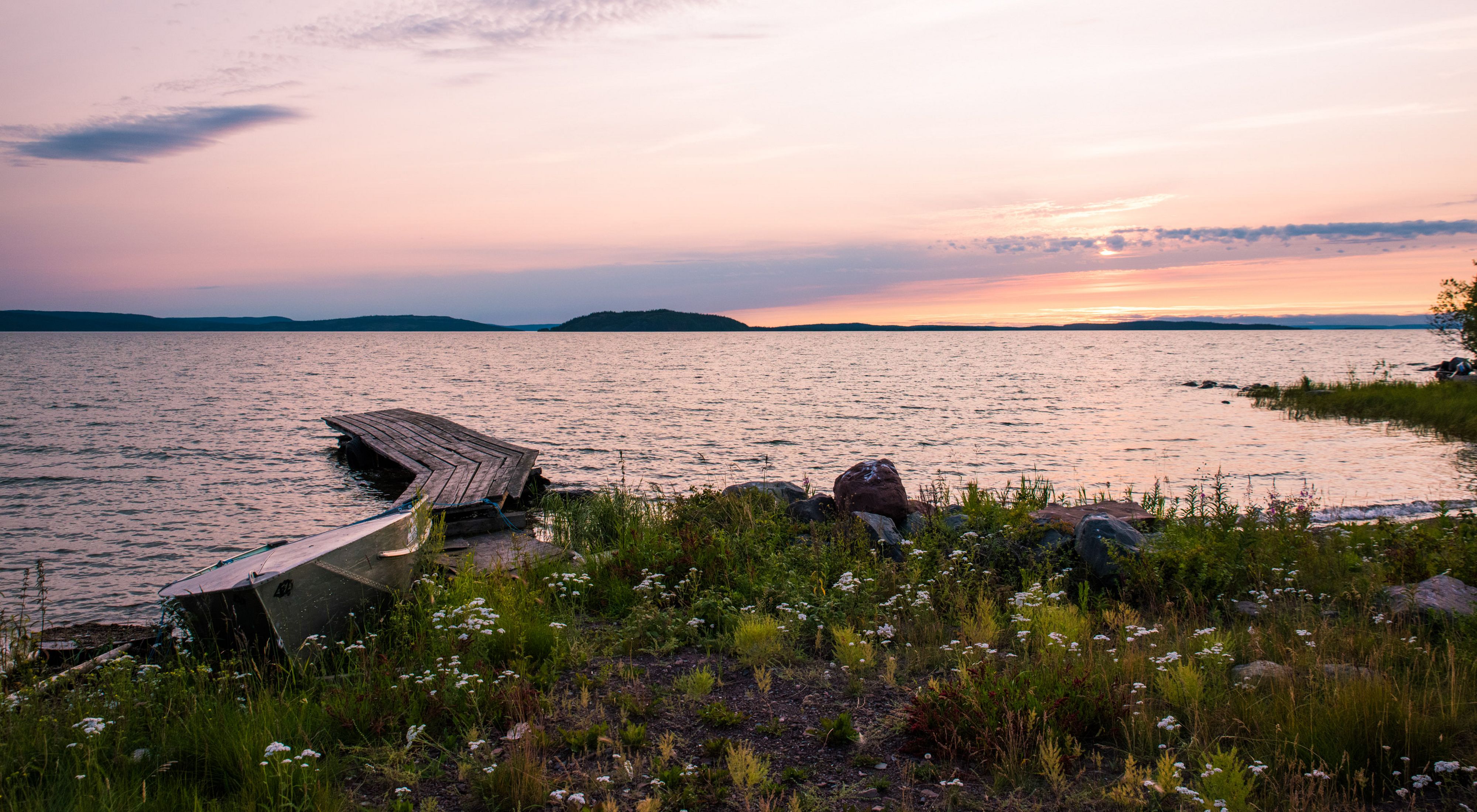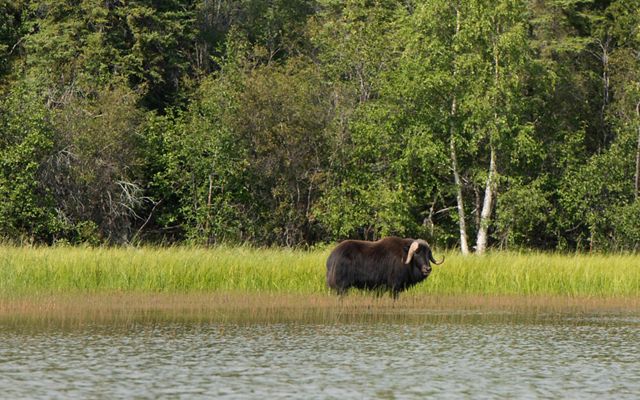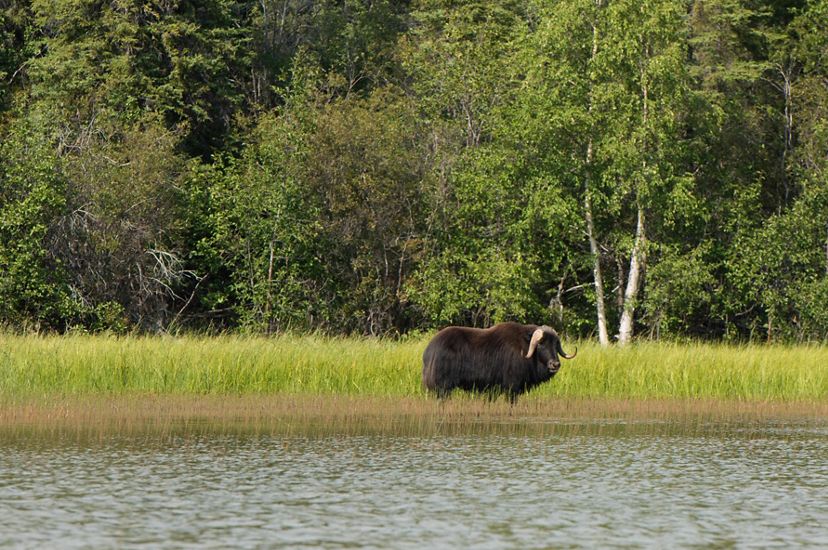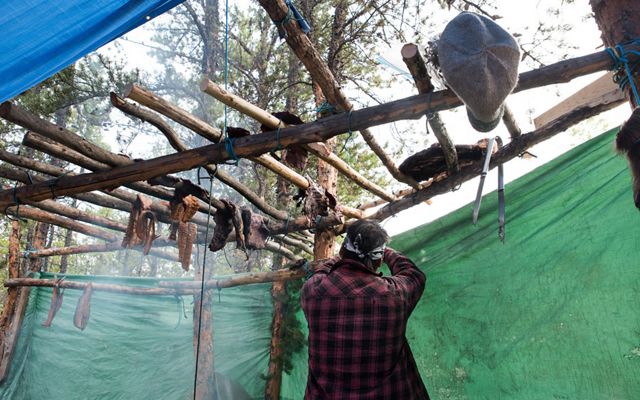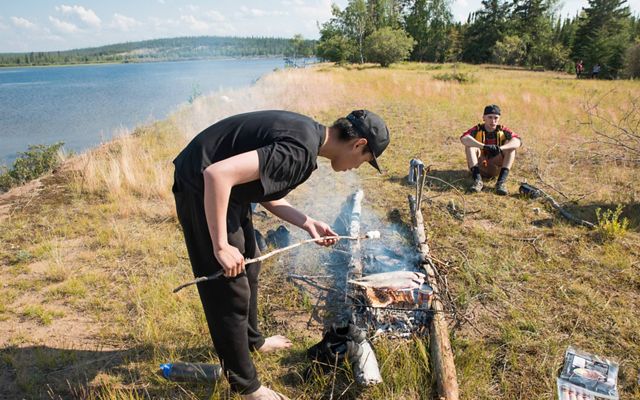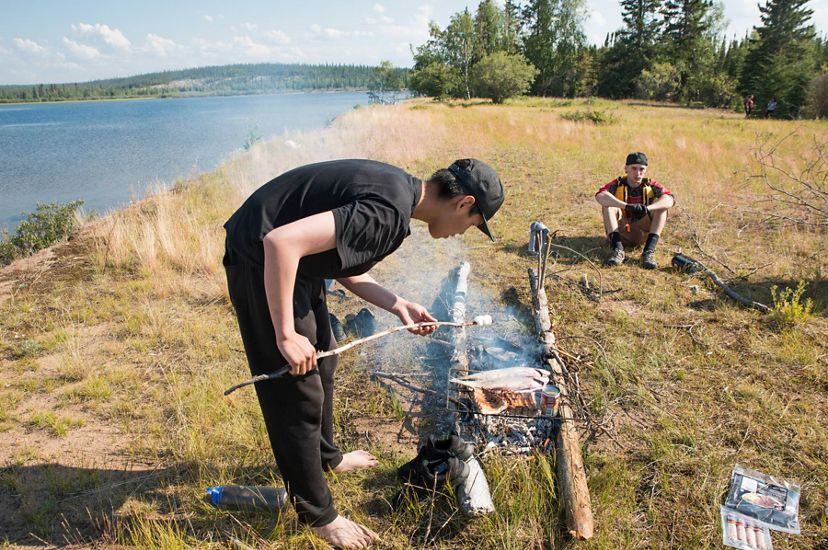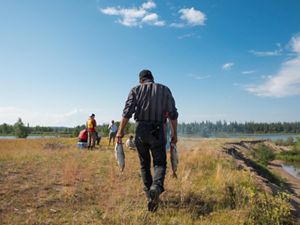How North America's New 6.5 Million Acre Protected Area Became a Reality
Indigenous leadership protected 6.5 million acre Thaidene Nëné, which includes Canada's newest national park, with support from The Nature Conservancy
It’s minus 37 degrees (F) with a windchill of minus 49 and Dennis Drygeese is outside sipping a cup of coffee—without gloves. He won’t stay out long, but this close to the Arctic Circle, every second of winter daylight is precious.
Drygeese is the language coordinator for the Łutsël K’é Dene First Nation, an Indigenous people in Canada’s Northwest Territories (NWT). He’s tasked with helping pass on the Denesoline (Chipewyan) language, a gateway to thousands of years of Dene culture, to the next generation.
During his foray outdoors, Drygeese enjoys a glimpse at what else will be passed on: the land itself.
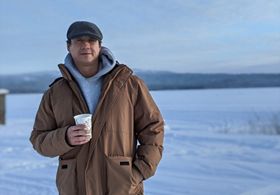
Describing Thaidene Nëné
In Denesoline language, Drygeese describes how much the land means to his people, the caribou eaters, & the need to protect it.
Finally, he can rest assured that his homeland is officially protected, not just for ecological purposes but for culture and sustenance.
What’s more, it’s protected thanks to Indigenous leadership.
In August 2019, after a multi-decade effort, 6.5 million acres of the Łutsël K’é Dene's homeland were officially protected in a historic agreement between the First Nation, the Government of the Northwest Territories, and Parks Canada (of the federal government). The Łutsël K’é Dene gave the protected area the name Thaidene Nëné, which translates as “Land of the Ancestors” in the Denesoline language.
The ecological edge where forest and tundra meet
The newly protected landscape, which includes Canada’s newest national park, is equal to the combined size of the following U.S. National Parks: Grand Canyon, Yellowstone, Glacier, Redwood, Zion, Arches, Shenandoah, Everglades and Acadia.
Here, ribbons of rock spool across the landscape, forming a stunning mosaic of dramatic cliffs, deep freshwater lakes and old-growth spruce forests. Carbon-rich boreal forest home to grizzly bears and lynx meets barren tundra home to caribou and muskoxen in a transition zone that, as the climate changes, will be vital to the preservation of species of both zones.
The Nature Conservancy (TNC), along with its Canadian affiliate Nature United, helped Thaidene Nëné become a reality by providing the Łutsël K’é Dene with strategic, financial and technical support for over a decade. TNC’s support provides the First Nation with the resources to manage the land according to their values, a true gamechanger.

Access to the land that gives them life
The truth is the federal government tried to create a national park here fifty years ago, and it would have been a very different place.
In 1970, the leadership of Łutsël K’é refused to consent to a national park, knowing that such a park would've banned hunting and fishing access for First Nations on the lands. Their southern relatives were banned from Wood Buffalo National Park (within Alberta and NWT) and experienced jailtime for accessing traditional hunting grounds.
Quote: Steven Nitah
The Creator didn't create lands and put us on those lands so we could be taken out of there.
The Łutsël K’é Dene rely on the vast lands North and East of Great Slave Lake to fish and to harvest caribou, whose hides they use for clothing, whose bones they use for tools, and whose meat they consume. The land, as the community’s lead negotiator Steven Nitah puts it, literally gives life to the Dene.
Nitah’s baritone voice comes across matter-of-fact: “The Creator didn't create lands and put us on those lands so we could be taken out of there.”
Urgency to protect a homeland grows
Leaders in Łutsël K’é began discussing the idea of a national park as other interests began to set their eyes on the Dene homeland, interests that had the potential to alter the landscape for good. More and more, mining companies entered the NWT, opening new diamond mines and prospecting for uranium, which was found to be a rich resource within Thaidene Nëné.
By the mid 2000s, there was a growing appetite within the Canadian government to share decisionmaking in land protection with First Nations. A catalyst for this change was a growing movement in Canada that began to realize Canadian responsibilities to Indigenous people.
Going fast by taking it slow
When TNC's Canada program began working with the Łutsël K’é Dene in 2009, the organization did not dive in and steamroll the process; it took the time to just listen.
“Before we assume what needs to be done, we let our partners tell us how we can be useful, and we match our skills and expertise with those needs,” says Tracey Williams, Nature United’s lead in the NWT. “And that actually builds momentum.”
Over the next decade of partnership, no two tasks were the same. TNC provided tools and resources to help Łutsël K’é build evidence for Thaidene Nëné’s boundaries. When the NWT officially took over land responsibilities from the federal government, Nature United staff added input for the territory’s protected areas act. TNC funded the community’s work to expand economic development and ecotourism.
“We'll do it our own way, in our own landscape”
Momentum built quickly after TNC early on supported a trip bringing Łutsël K’é elders to British Columbia’s Haida Gwaii to learn how the Haida Nation created a landscape ranger program that also mentored youth. At the invitation of the Haida Watchmen, the Łutsël K’é elders visited five villages within Gwaii Haanas National Park Reserve & Haida Heritage Site, where the watchmen live.
The elders found it very inspirational to see experienced land-users pass on skills and knowledge to their youth. They were on the Pacific coast, far from home, but in this ranger program they saw themselves.
“It was ‘this is us. We'll do it in our own way, in our own landscape, on the boreal tundra edge, where we belong,” recalls Williams.

The watchers of the land
And so the answer to the 6.5 million acre question of who will manage this vast territory was born—literally—on the land. The key to implementing the Dene’s vision for Thaidene Nëné is the Ni Hat’ni Dene Ranger program. Translating to “Watchers of the Land,” the program trains rangers to manage the land and, throughout the year, to pass on valuable skills directly to Łutsël K’é’s youth.
“There's a whole cadre of youth individuals that had their lives changed because they were able to have these intensive on-the-land experiences, this intergenerational transfer of knowledge about place that you can't get from a textbook or a lecture,” says Williams.
The ranger program is a crucial part of the management strategy for the Dene’s vast homeland. But as Nature United Conservation Director Jenny Brown pointed out, the success of the program depends on stable funding. “Without sustainable funding,” says Brown, “you could have all the decision-making changes but there’d be no mechanism to see it through.”
On an August day marked by the beating of drums, the burning of ceremonial tobacco, and the signing of historic agreements over a new national park, the Łutsël K’é Dene announced the Thaidene Nëné Trust. Catalyzed by $15 million (Canadian) raised by TNC and matched by Parks Canada, the $30 million creates a sustainable trust that ensures Łutsël K’é always has the financial capacity to manage their vast territory.
“We can bring Indigenousness”
“By having access to the fund to pay for what we need to fulfill our end of the responsibility, we can bring Indigenousness—this spiritual, reciprocal relationship we have with the land, that most Indigenous peoples have with land across the world,” says Steven Nitah.
Out on rivers, in the forests and on the barrenland tundra, Łutsël K’é’s rangers carefully monitor what may be hundreds of data points to manage including, caribou herds, medicinal plant habitats, traditional gathering spots and burial ground sites.
To the Łutsël K’é Dene people, these data points represent the Dene Way of Life. The connection to their land is more than a landscape to be managed. It is sacred ground.
To Dennis Drygeese, the strength of the people is directly tied to the strength of truly knowing the land and being on it.
And of being of it.
“When I was a young kid I’ll always remember my uncles coming back from the barren lands with caribou meat, and I always wanted to go hunting with them,” says Drygeese. “And my grandmother always said, it’s too cold for you. Only Thaidenes can survive on that land. Thaidene means people who are really powerful, who can endure any type of weather and survive basically anything. I’ve been interested in Thaidene Nëné since then.
Now and forever, the Land of the Ancestors is home.
